On 3rd October 2019, the Vivekananda International Foundation (VIF) held a book discussion on the book, ‘Containing the China Onslaught’, written by Mr. Pradip Baijal, a former Indian Administrative Service official. Dr. Arvind Gupta, Director, VIF opened the discussion by introducing Mr. Baijal to the audience and gave an introduction to the book.
The book covers various aspects of China’s economic policy since 1979 and comes at a time when the People’s Republic of China celebrated its 70th anniversary on 1st October 2019. The discussants for the book were, T.C.A Srinivas Raghavan and Prof. Sujit Dutta.
The book gives an insight into China’s rise and what are India’s options as far as coping up with the implications of the rise. While China’s growth has been nothing short of a miracle in the past three decades, one also needs to take stock of the People’s Republic’s first 30 years which can be seen as a blot on its history. China’s hegemonic tendencies are now becoming a cause for worry primarily through the Belt and Road Initiative (BRI). For India, China’s rise is an issue to be pondered upon as China continues build and invest in ports, roads, airports in its neighbourhood and through India’s territory under Pakistan’s occupation. Baijal’s book gives insight into India’s core competencies argues that India should take help from U.S, Japan, and other democracies to speed up its growth and compete with China.
Author’s Views
Mr. Baijal argued that India's relations with China was not merely a foreign policy issue but also affects the public and economy. The U.S has played a vital role in China’s rise. Though the foundations for U.S-China rapprochement was laid by President Nixon and Mao Zedong, it was Deng Xiaoping’s reforms with the help of the U.S which led to China’s economic growth. The U.S helped China grow to contain the Soviet Union and because of the lure of its market size. Foreign Direct Investment in China was focused on infrastructure. China’s economic growth was never appropriately shown as the Chinese state believed that others would contain its growth. China was given World Trade Organisation (WTO) membership in an accelerated manner which was backed by the U.S opinion that China would bring both strategic and economic gains. While the U.S was focused on geopolitics and the market in supporting China, its corporations never actually got full access to the Chinese market, rather land was given to them to set up manufacturing bases for exporting to the world and to the U.S.
Deng’s policies of reforms were only limited to the economy and did not expand political freedom. By the late 1980s, protests erupted leading to Tiananmen Square massacre. The Tiananmen Square incident could also be seen as the first time the U.S expectation of China heading towards becoming a democratic state hit a roadblock. But the U.S administration did not react strongly on it because the U.S corporations were making hefty profits from the new manufacturing bases in China and its low labour cost. The U.S trade deficit against China grew year by year, in the past decade China has begun to pose a serious challenge in both technology and military domains. The relationship has undergone dramatic changes that are reflected in President Trump’s trade and technology restrictions against China.
China has been expanding into markets which suit its massive manufacturing prowess through BRI and flexing military muscles in the South China Sea. It is also poised to emerge as the largest global economy, overtaking the U.S. Democratic countries need to constrain its rise by enhancing their cooperation and formulating a joint strategy. The author recommended a U.S-India-Japan coalition to deal with implications of China’s rise.
Discussants’ Views
T.C.A Srinivas Raghavan
Journalist T.C.A Raghavan agreed with Mr. Baijal’s views, but also emphasised that while it is crucial to find out China’s vulnerabilities, India should be aware of its own. On China’s vulnerabilities, Raghavan pointed out that the Communist Party deals with any disturbance with force which shows its weakness and insecurity due to the unpredictability of the system it has put in place. There is an absence of a safety values.
Another underlying vulnerability, according to Raghavan, is that there is no reliable record showing the extent of rural development in China, which leads to another problem, i.e., it does not produce enough to feed its population. The tariffs on soyabean and poultry imports from the U.S have made the situation worse. On the diplomatic front, Raghavan said that the Chinese believe in always winning a bargain. This is evident in their dealings with all countries, which is why the backlash against BRI is taking place in several countries.
The issue of debt is also an important weakness of the Chinese economy, and exact figures have not been provided for its internal and external debt. The Chinese are also the most inefficient users of capital. With a savings rate of 45 per cent, its economic growth should be above 10 per cent, but that is not the case. Pouring money to sustain demand for steel, cement, and labour lead to inefficient use of capital.
For India, it needs to exploit China’s vulnerabilities, especially its diplomatic outreach. However, this is contingent on India improving its economic growth rate and bolstering its defense forces. India’s economic growth faces the problem of not accumulating enough capital and inefficient distribution of the same.
Prof. Sujit Dutta
Prof. Dutta was of the view that it is in the interest of the Americans and the Japanese to work with India, in the Indo-Pacific. Policymakers in India need to understand that politics and economics are Siamese twins when dealing with China. The first 30 years of Communist rule, was an unmitigated disaster politically and economically. By 1979, the Chinese society and the Communist Party had been ravaged by Mao’s ultra-left policies. The reforms were introduced by Deng after Mao’s death to turn around the situation. It was helped by the U.S to join the International Monetary Fund (IMF) and the World Bank in 1980. The Communist Part has vilified these organisations through the Mao period. Deng played a key role in China’s reforms.
Mr. Baijal, according to Prof. Dutta ends his study at a time when the strategic outlook has radically changed and U.S and Japanese views on China are no longer positive. China faces multiple domestic and external challenges as a result. The economy has slowed and protests have grown. The Chinese state is not publishing the protest statistics since Xi Jinping rose to power. While China today is a formidable force in trade, technology and military fields it is also deeply vulnerable. President Xi Jinping has concentrated all power and removed the two-term limit in the constitution for the General Secretary of the Communist Party of China.
Prof. Dutta disagreed with Mr. Baijal’s prediction that China’s GDP would overtake those of the U.S-Indian-Japan combined given the growing resistance to China’s rise.
Conclusion
Praip Baijal, while responding to the discussants said that the world economy is entering the era of the fourth industrial revolution and this is good news for India given its core competence in software, pharma and digital fields. He called for more cooperation between India, Japan and the U.S. The latter have the technology and the capital. What worries him is that investments from Japan in India has not grown significantly since 2014.
Dr. Gupta, while concluding the discussion said policymakers need to appreciate that India needs to widen its reform process. For China to take India seriously and see as a competitor the policies have to be robust leading to success of Make in India, indigenisation of defence equipment, and investments in technology. Self-sustenance by becoming a manufacturing hub will help India to be taken more seriously by the major powers.

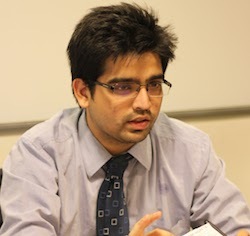
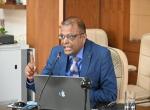
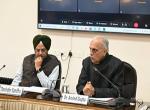
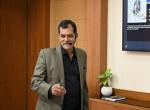
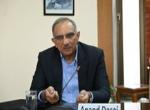
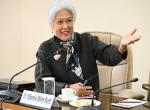


Post new comment